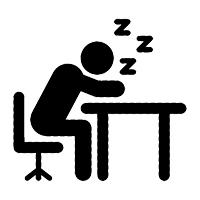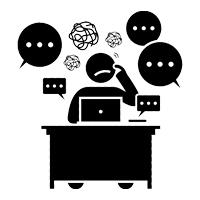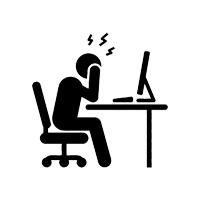The Real Cost of Meetings
What are the real cost of meetings especially with the rise of remote work. Too many meetings leads to disengaged employees, creating undue stress and pressure.

“We must have a meeting about that!” is a phrase that can be exciting and be full of promise, but most of the time it conjures up images of boredom and time wasted. A business meeting is defined as a gathering of two or more people for the purpose of making decisions or discussing company objectives and operations.
Let’s break that down for a second. You gather people together for a purpose. The reason for bringing these humans together is to make decisions or discuss essential aspects of the organization. If you are having a meeting and you don’t know what you are going to discuss you should not be having the meeting. You are wasting time and money and energy. The purpose of the activity is part of morale. If you are not leading with purpose you won’t have people who will believe in what you are doing or trying to achieve. They won’t feel they have a purpose and therefore it becomes just a paycheck and that creates a minefield of problems.
Business meetings used to be in person in an office or a venue, however with the rise of technology you can join a business meeting from anywhere on a device. This means you can work from anywhere but on the flip side of that coin, it also means you are always available no matter where you are or what time it is. Meetings take up a lot of time. According to research half of all meetings were considered a waste of time, which is a large concern since 11 million meetings take place in the USA every single day. You would think that all these meetings were driving the great economic engine forward but the fact is that 63 percent have no planned agenda at all and therefore little to no value.
An organization that wastes time corralling employees instead of focusing on what is important is going to spend unnecessary money and play havoc with morale. Meeting for the sake of meeting is not a good plan if you want to have a great place to work and a successful and profitable enterprise. It could be argued that having constant meetings is something that needs to be stamped out of the workplace, or at the very least seriously reconsidered. Wasting time is not productive and it creates unnecessary stress on your team members as well as disrupting their rhythm. A meeting should take place when it matters and when it is necessary. The numbers don’t lie. $37 billion is wasted on unnecessary meetings in the United States every year. That is because time wasted has knock-on effects as well as the simple math of working out the actual paycheck hours that were simply wasted sitting around having meetings instead of being productive.
Meetings and their problems
When you are sitting in a meeting that you don’t need to be attending, you are going to do something else while you are sitting there rather than paying any real attention to what is going on in the room. A study by Atlassian found that :
91 have percent daydreamed during meetings.
Studies have found that the average meeting lasts an hour and a half. Ninety minutes. That is a huge amount of people that were “away with the fairies” while business was being conducted. They were daydreaming about something else. Which means they were not engaged at all. They’re being paid a salary or by the hour to be there and yet for one and a half units of time that people are paid for, they were mentally on a beach in Hawaii enjoying a cocktail, or maybe they dreamed about owning a dream house or sports car or playing golf or fishing. Perhaps for the time, they should have been working at your company but instead, they were thinking about skiing in perfect powder in Aspen instead of listening to some boring mid-level manager drone on about a report that could have been emailed to the whole team. Make sure that your employees are engaged when they attend a meeting or you are wasting not just time — but money too.

39 have percent slept during a meeting.
The fact that close to 40 percent of people say that they have fallen asleep during a meeting is kind of funny but at the same time, it is shocking as well as worrying. Looking over at a colleague to see what they think about the presentation to find them snoring could elicit a giggle at the time, and yet, the fact that people are falling asleep in a meeting means they are not engaged in the meeting and they are at the very least bored and at the worst completely disconnected from the corporate culture. That might not be their fault. If you are scheduling meetings that don’t need to be held you are effectively putting an anchor around the necks of your workforce and shackling your team to time that could be spent more productively.

73 percent have done other work instead of paying attention to the matters being discussed in the meeting.
If you are honest with yourself this is actually quite an impressive initiative by members of the team and the company. If the meeting is a waste of time they know they don’t need to pay any attention to the meeting because they have got it covered and rather focus on things that require their attention. They prioritize their time accordingly. We should be able to trust our team to do the right things. Unfortunately, there could also be another side to this and that is when people are disengaged and behind on their workload. Stress and pressure bring out behavior that can be a sign to which managers need to pay attention. Once again making sure your team is engaged is part of scheduling meetings and internal communication skills. Building an engaged team comes from knowing when you need to meet and when you don’t.

45 percent said they were overwhelmed by the number of meetings they were expected to attend.
Our modern hybrid workplace is also causing worry, especially for managers of teams. Another meeting invitation can cause alarm even if you have a great place to work. Feeling overwhelmed is not something you ever want to hear from the people you rely on to get things done. Your organization needs everyone to be able to work hard but also feel calm and collected. If they aren’t able to do so you won’t have a smooth-running production line or customer service. Recent research has shown that a calendar alert going off about an upcoming video conference is a recipe for stress and worry.
When you are pressured to constantly be present at a virtual meeting you will not be as productive as you could be and your anxiety can be ramped up to unforeseen levels. When people are overwhelmed, things get missed and mistakes get made. If team members are stressed all the time they can start to burn out. This can be a very costly problem. When a member of your team burns out they become disengaged and it can also affect other members of their team. Disengaged employees cost their employers 34 percent of their paycheck. Burnout also accounts for 20 – 50 percent of employee turnover. When the Great Resignation began it started to become a priority to try and keep as many team members as possible. If you are causing staff to have stress by scheduling too many meetings you could end up burning out the people you are trying to engage and that would be disastrous.
Burnout costs between $125 billion and $190 billion every year in healthcare. An amazing workplace makes sure that its team members’ health is considered when meetings are being scheduled.
Digital Overload
Digital overload is now a problem. We have come out of the global pandemic in a new era that has embraced remote and hybrid working. The issue is that with video conferencing time can be scheduled for meetings pretty much back to back. Instances of workers being unable to take bathroom breaks or meal breaks become common especially when different time zones come into play. Sleep patterns can be ruined and stress and anxiety get ingrained in team members’ lifestyles which can cause high staff turnover.
In Microsoft’s 2021 Work Trend Index, 54 percent of respondents in a global external survey said they felt overworked. 39 percent described themselves as outright exhausted. It is no wonder that people are seeking a better work-life balance and quitting in droves across the board.
Researchers at Microsoft found that having hours of back-to-back meetings, caused stress which increased over time. They studied the waves in the brain and discovered that when you have a meeting after meeting with no break the stress keeps accumulating. It gets worse and compounded the further into the day you get.
The antidote to meeting fatigue is simple: take short breaks. When you are experiencing stress, it’s harder to stay focused and engaged.
Knowing when to take breaks between meetings to refocus so that the team can be more present and more productive is a skill in itself. It needs to be done or you will lose people and some of those may be irreplaceable. Having to onboard someone is an expensive proposition. Training and experience take time and you may lose someone halfway through the process if they are overwhelmed with too many meetings immediately.
Stress transitioning between meetings is a serious worry for a manager in the modern workplace. Researchers have noticed that the transition period between calls causes stress levels to spike. Your people need to be focused when they are going into sales or client calls. If they are still thinking about the call they just had moments ago, or worrying about the preparation for an upcoming call while the alerts keep mounting as the day goes on, they are going to get more stressed. They can’t give their best because they aren’t being given the time and space to be more productive. Time management is key to figuring out the balance. The ability to change gears multiple times takes a certain type of person. Having constant meetings can be draining. Give them space and at least a short break between meetings to refocus and reset. This way you will get more engaged people and more productive use of everyone’s time. It will in turn save money as well as make more.
Meeting tips:
Is it Necessary?
Before you or a member of the team schedule a meeting, ask whether the meeting is needed at all or if there is any other way to accomplish your desired result. Having a meeting just to say hello and catch up can be done in different ways. It is not going to help anyone to have no agenda and no purpose.
Take Breaks
Get rid of back-to-back meetings: Some may think it is more productive to schedule back-to-back meetings because they are using every minute of time available — but research shows the opposite is true. Studies have found that short breaks are an essential part of the new hybrid and remote American workday. Apply care and attention to proper time management in this way and results should follow.
Having Productive Meetings — Conclusion
Time management and consideration of your team’s needs and priorities will make for better workplace culture and an overall improvement. Making meetings more effective and energizing will also be a bonus to anyone trying to get their meeting schedule more impactful and economical. Meet less but use time wisely. The real cost of meetings is more than just the time spent or time wasted, it bleeds into multiple levels of the endeavor and can be a make or break point when it comes to the bottom line as well as employee retention and organizational culture.



